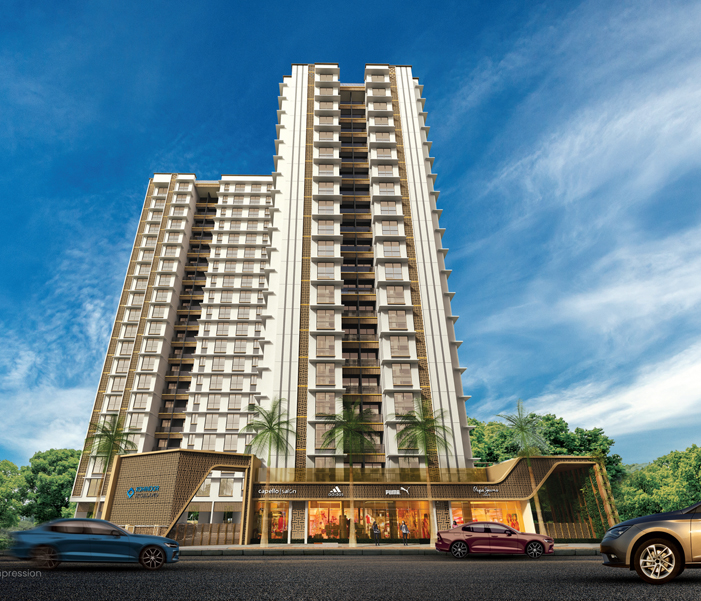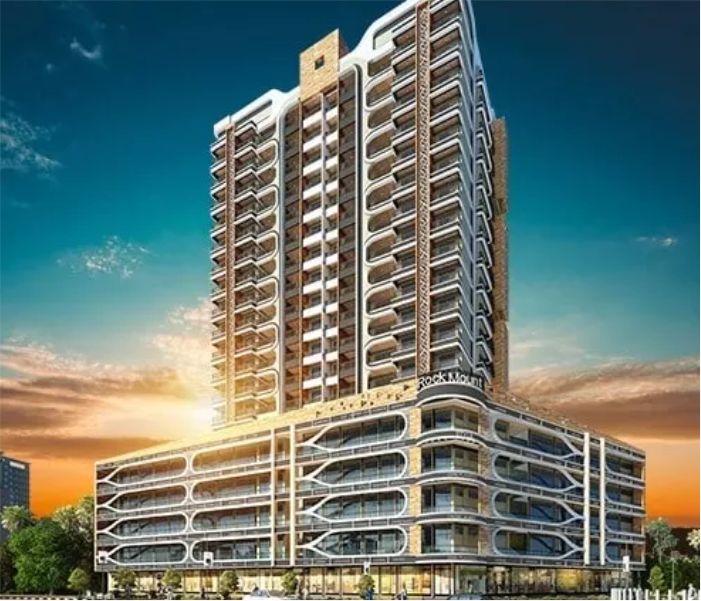
Bridges play a vital role in modern infrastructure, connecting communities and enabling the flow of goods, services, and people. They are a testament to human cleverness, embodying our ability to speechless obstacles and connect distant lands. Bridges are an important infrastructure because they permit people to cross waterways, canyons, and other obstacles easily and safely, which would otherwise be grim or impossible to navigate.
Components of a bridge
Bridges are complex structures calculated to span physical obstacles such as a river, road, or railway and deliver a safe and reliable passage for people, vehicles, and other forms of transport. Bridges can be made up of numerous components, including:
Deck: The deck is the roadway or walkway that offers a surface for vehicles, pedestrians, or cyclists to cross the bridge.
Abutments: Abutments are the solid constructions at either end of a bridge that support the deck and assignment its weight to the ground.
Piers: Piers are vertical structures that support the bridge deck and are located between the abutments.
Bearings: Bearings are devices that permit the bridge deck and piers to move vertically and straight, absorbing the stress of variations in temperature, traffic loads, and wind.
Expansion joints: These are located between sections of the bridge deck to allow for expansion and reduction due to temperature changes.
Stringers: Stringers are long structural members that run similarly to the bridge deck and support it.
Guardrails: Handrails are barriers that run along the sides of the bridge deck to prevent vehicles or pedestrians from dwindling off the edge.
Sidewalks: Sidewalks are walkways on the edges of the bridge deck for pedestrians.
Lighting: Bridges often have lighting organizations for safety and aesthetics.
These workings vary in design and construction depending on the type of bridge, such as a postponement bridge, a cable-stayed bridge, or a truss bridge.
Types of bridges
Bridges are built to provide passage over problems such as rivers, valleys, or roads. There are many types of bonds, each with a unique design and purpose. Here is an indication of some of the most common types of bridges:
Beam bridge
Different types of bridges, components, advantages and disadvantages
It is the meekest type of bridge and consists of a horizontal beam supported by two piers. It is characteristically used for short spans and is unsuitable for larger spans or heavy loads.
Example: The Golden Gate Bridge in San Francisco is a well-known beam bridge.
Advantages: Beam bridges are informal to construct, inexpensive, and simple to maintain.
Disadvantages: They need to recover their ability to span large distances and may need to be stouter to carry heavy loads.
Arch bridge
Dissimilar types of bridges, components, advantages and disadvantages
An arch bridge uses an arch-shaped construction to span a river or road. The bridge’s weight and load are transferred to the supports at either end, making it a strong and durable design.
Example: The Roman channels are some of the most famous arch bridges in the world.
Advantages: Arch bridges are robust and durable, able to withstand heavy loads and seismic activity.
Disadvantages: They are more multifaceted and difficult to build, requiring specialised skills and materials.
Tied Arch bridge
It uses geographies of both a suspension bridge and an arched bridge. However, in this the arch is positioned above the deck. It is supported by vertical cables. The tension of the vertical cables aid keep the bridge stable.
Tied Bridge
Advantages:
Strong
Can be constructed somewhere and assembled on site.
Disadvantages
If one arch breaks, the construction becomes weak.
Suspension bridge
Diverse types of bridges, components, advantages and disadvantages
A suspension bridge uses cables to support a roadway postponed from towers. The cables are anchored to supports at either end, and the roadway is deferred from the cables by vertical suspenders. Postponement bridges are commonly used to span large distances, such as rivers or bays.
Example: The Akashi-Kaikyo Bridge in Japan is the lengthiest suspension bridge in the world.
Advantages: Suspension bridges can span long detachments and carry heavy loads. They are also very supple and able to withstand strong winds and earthquakes.
Disadvantages: Suspension bridges are expensive to shape and maintain, and their cables can be vulnerable to corrosion and injury from extreme weather conditions.
Cable-stayed bridge
Dissimilar types of bridges, components, advantages and disadvantages
A suspension bridge resembles a cable-stayed bridge. Still, instead of hanging the roadway from cables fastened to abutments, the cables are attached directly to one or more towers.
Example: The Sutong Bridge in China is one of the lengthiest cable-stayed bridges in the world.
Advantages: Cable-stayed bridges are strong, supple, and span long distances. In addition, building and upholding them is not too expensive.
Disadvantages: Cable-stayed bridges can be susceptible to corrosion and damage from extreme weather circumstances and may not be strong enough to carry heavy loads.
Truss bridge
Different types of bridges, components, advantages and disadvantages
A truss bridge uses a truss, or a series of unified triangles, to support the roadway. The truss includes steel or concrete members and is intended to resist bending and compression. Truss bonds are commonly used for medium- to long-span bridges.
Example: The Brooklyn Bridge in New York City is a well-known truss bridge.
Advantages: Truss bridges are very strong and can span long detachments. They are also lightweight, making them less luxurious to build and maintain.
Disadvantages: Truss bridges are complex and problematic to build, and they can be vulnerable to weathering and damage from extreme weather conditions.
Cantilever bridges
Different types of bridges, components, advantages and disadvantages
A cantilever bridge is built using cantilevers, constructions that extend horizontally into space and are reinforced on only one end. These bridges have two large arms that spread from piers at either end of the bridge toward each other. When the two cantilever arms meet in the centre of the bridge, they are connected with a beam, making a continuous structure.
Example: The Forth Bridge in Scotland.
Advantages: Cantilever Bridges can span large detachments without intermediate supports. They also can be constructed in stages, making construction easier and more efficient.
Disadvantages: Cantilever Bridges are complex and problematic to construct. Also, require strong and sturdy foundations to support the cantilever arms. They are more luxurious than other bridge types.
Tied-arch bridges
Different types of bridges, components, advantages and disadvantages
A tied-arch bridge is a type of bridge in which an arch is used to support the deck, with cables or rods connecting the arch to the ground or towers on either side. The arch provides vertical support to the deck, while the cables or rods provide horizontal stability.
Example: The Sydney Harbour Bridge in Australia.
Advantages: Tied-arch bridges include their ability to span large distances, aesthetic appeal, and stability against wind and earthquakes.
Disadvantages: Tied-Arch Bridges are complex, difficult to construct, and more expensive than other bridges. They require strong and sturdy foundations to support the arch.
These are just a few examples of the many types of bridges. Each type of bridge has unique strengths and weaknesses, and the choice of bridge design will depend on factors such as the span length, location, and intended use.
Different types of bridges based on function
Based on their function and purpose, bridges can also be categorised into the following types.
Aqueduct/viaduct bridge
An channel, derived from the Latin term meaning ‘water bridge’, was used by the Romans to transport water from one site to another. These arched structures served as water bridges. On the other hand, a viaduct is a raised roadway that distances a long distance, supported by a series of arches.
Culvert
Although not classified as bridges, culverts share similarities with them. These simple structures, often surrounded by soil or fill, allow water to flow beneath roads, trails or rail lines instead of crossing over them. While most culverts are constructed using concrete, some are made of basic corrugated pipes.
Double-decked bridge
Double-decked bridges are designed to accommodate increased traffic flow in densely populated areas. The upper deck features six lanes in each direction for freeway traffic, along with pedestrian footpaths and sightseeing areas. The lower deck carries four additional local motor vehicle lanes, two lanes for non-motorized vehicles, and two pedestrian walkways.
Pedestrian bridge
Pedestrian bridges, also known as footbridges, are simple structures that allow individuals to cross canyons, streams, or roadways. They are typically wide enough for one or two people to walk side-by-side. Early bridges consisted of stepping stones or fallen trees. This category also includes swinging bridges and boardwalks that traverse lower, marshy or sandy terrain.
Pipeline bridge
Pipeline bridges are exactly built to support gas or liquid pipelines. These bridges are constructed in areas where it is not possible to lay the pipeline under a river or other obstacles. Suspension bridges are often employed for this purpose.
Train bridge
Truss bridges gained prominence during the 19th century when railroads were the main means of transportation. Therefore, many truss bridges were constructed to carry rail lines. Trestle bridges, another type of train bridge, contain multiple short beams connected end-to-end and reinforced by closely spaced frames, often made of wood, to span long distances.
Vehicle traffic bridge
A vehicle traffic bridge is intended to accommodate the passage of at least one vehicle in a single direction. Typically, these bridges eye multiple lanes to accommodate opposing traffic flow. They are constructed to be wide and sturdy to ensure the safe traversal of vehicles.
Also Read About "Discover the Leading 10 Construction Companies Shaping Mumbai's Skyline"


.jpg)
Recent comments(0)